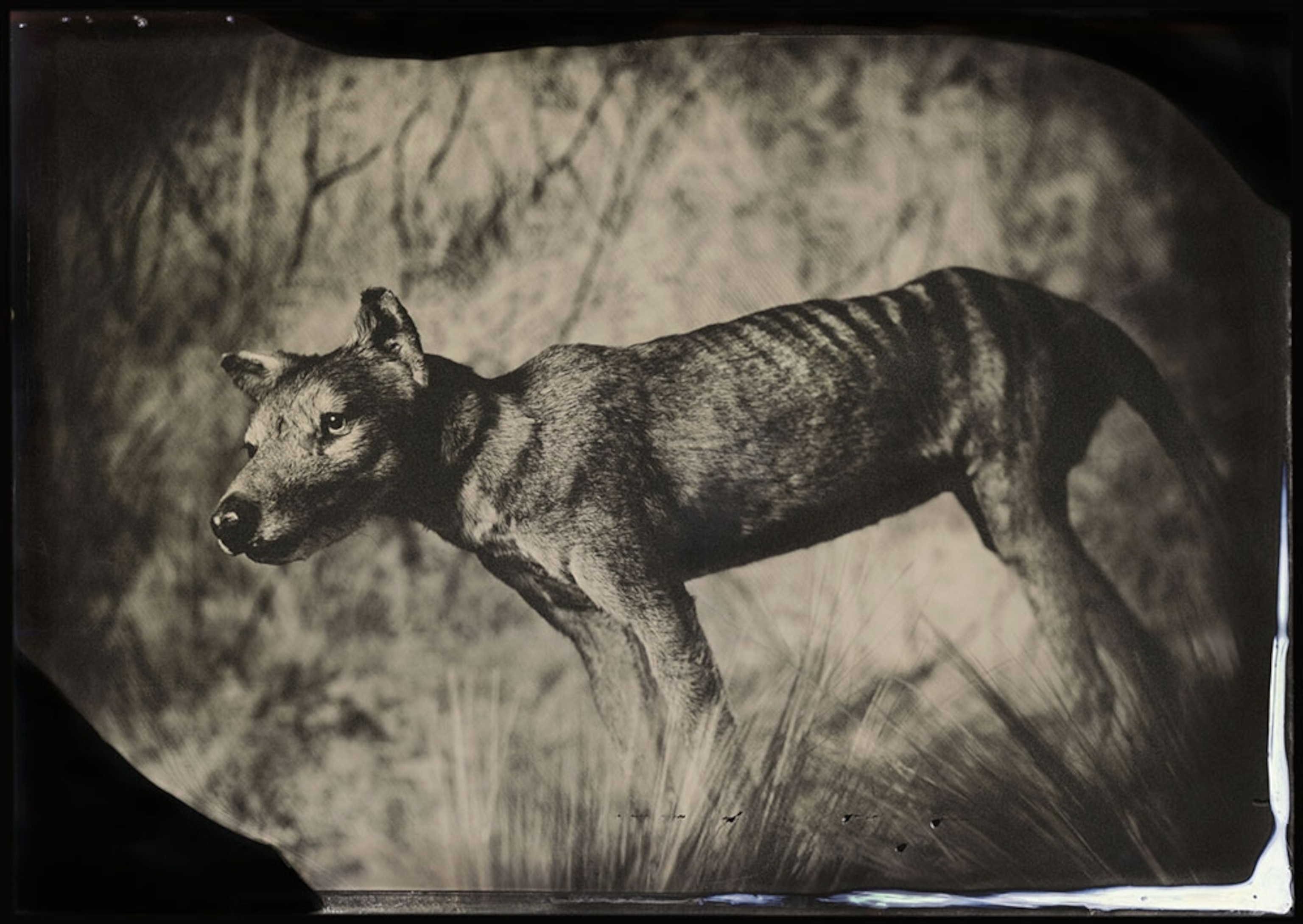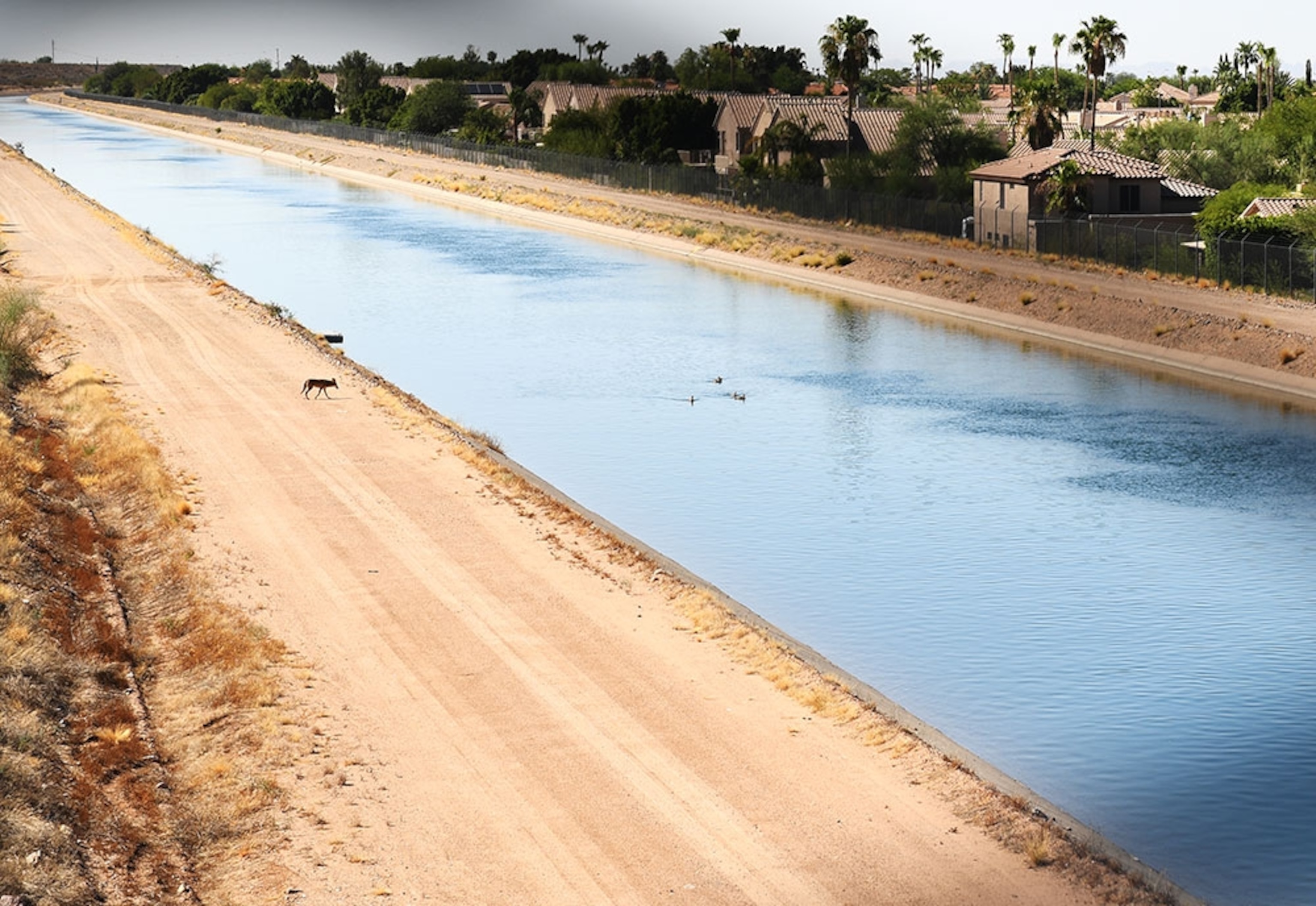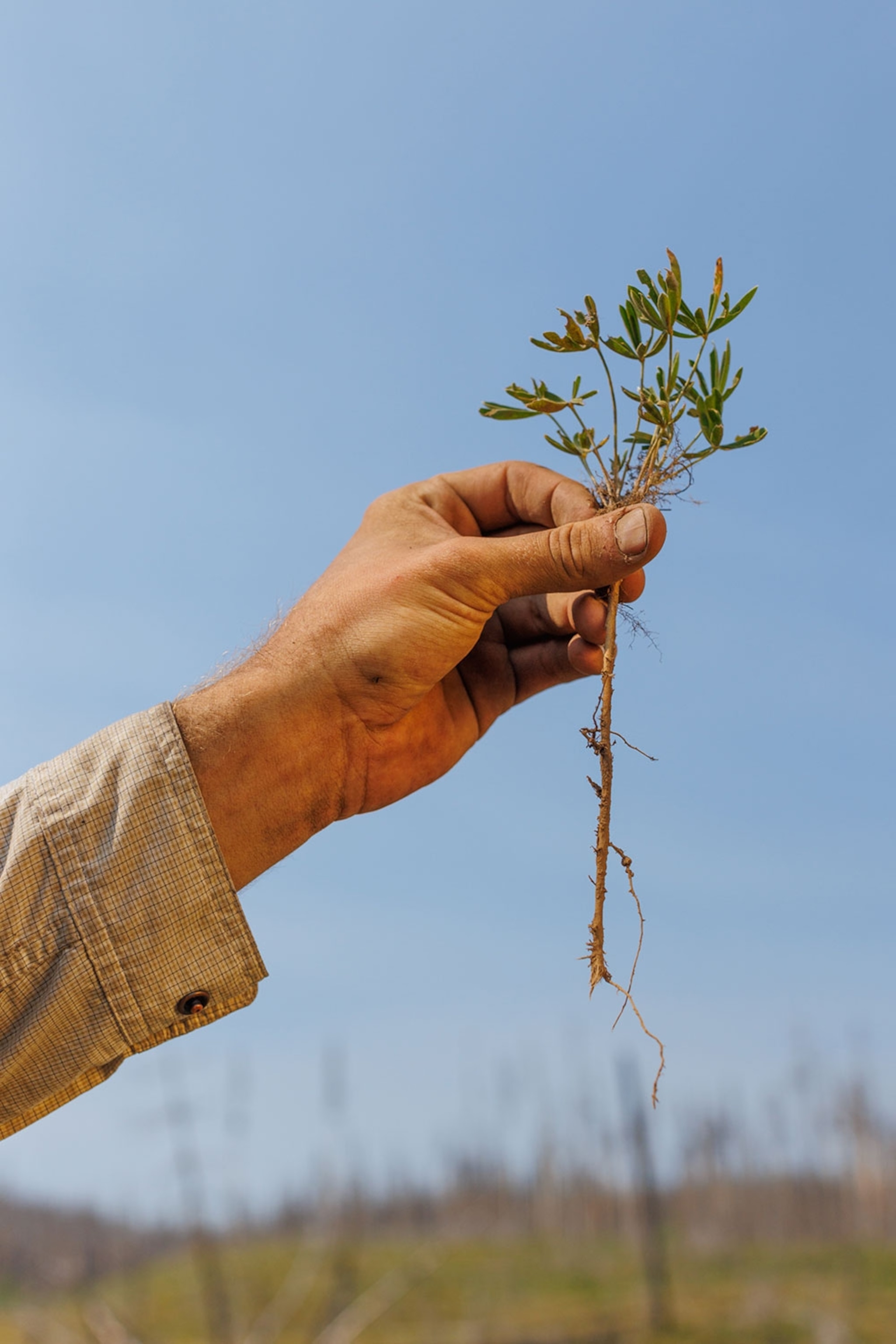
Will these extinct ‘tigers’ roam again?
In today’s newsletter, we discover scientists’ hope to restore a species lost in the 1930s, report that 40 million Americans are preparing to ‘take’ much less water from the depleted Colorado River … and find ways to get outdoors to improve health. Plus, is this island the best diving spot in the Caribbean?
When the Tasmanian tiger went extinct in the 1930s, the southeastern Australian island lost an apex predator that kept its ecosystem in check. Today, scientists announced a new plan to combine the DNA of that species with that of living relatives—and make it “de-extinct.”
The Australian marsupial, also known as the thylacine (a taxidermic version pictured above), was called the Tasmanian tiger for the distinctive stripes along its lower back. It looked like a slim dog with a stiff, thin tail. Advocates say developing its revival would help create genetic engineering tools and artificial wombs to help with other species.
But can scientists re-create extinct species in a lab? If so, what are the effects of letting the lab-produced animals loose in nature?
Read the full story here.
Please consider getting the full digital report and magazine by subscribing here. Thanks!
STORIES WE’RE FOLLOWING
• Maps: The most important places to conserve in America
• Officials euthanize Freya the walrus, a 1,300-pound crowd magnet, saying she posed human threat. Related: How to do wildlife tourism right.
• Live animal markets in San Francisco accused of mistreatment
• See: At 2400x magnification, an adorable discovery in the woods
• Health professionals urge families to get outside for health. Here are ways to do it.
IN THE SPOTLIGHT
Slowing the spigot: Officials says they have been gambling for over a decade by diverting water from the dwindling Colorado River to 40 million people in the U.S. southwest. They were hoping for replenishment that never came. Now, seven states are expected to agree to cut a quarter of the water they draw from the 1,450-mile river, Alejandra Borunda reports. (Pictured above, a coyote heading to take a drink from a Colorado River-filled canal in Phoenix.)
Related: How the giant energy and climate bill will change America
SMARTER PLANET
Growing again: Years after huge wildfires at Grand Teton National Park, lupine roots (pictured above) are growing again. Research assistant Robbie Heumann collects roots and other plant specimens to determine how forest ecosystems respond after wildfires. This image, posted on our Instagram page, was captured during an assignment on the future of forests for May’s issue of National Geographic.
IN A FEW WORDS
Pay attention to problems on the fringe, and if you want to help, sometimes go there.Clare Fieseler, Marine ecologist, photojournalist, Nat Geo Explorer
LAST GLIMPSE
Protected: This island has more protected historical sites per square mile (both underwater and on land) than anywhere else in the Caribbean. And St. Eustatius (or Statia, to the 3,500 people who live here), is one of the best diving destinations in the region—and is taking pains to maintain the island’s natural beauty, Nat Geo reports. “Once people get a taste for nature, they always come back for more,” says Celford Gibbs, one of only three local guides on the island. (Pictured above, a scuba diver swims near a cannon on the seafloor off the island.)
And a final note, from our new editor in chief:. How Nat Geo helps build ‘a more complete and nuanced picture of our planet‘



